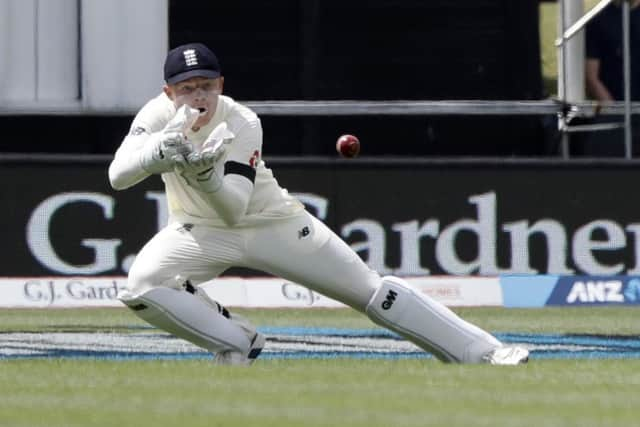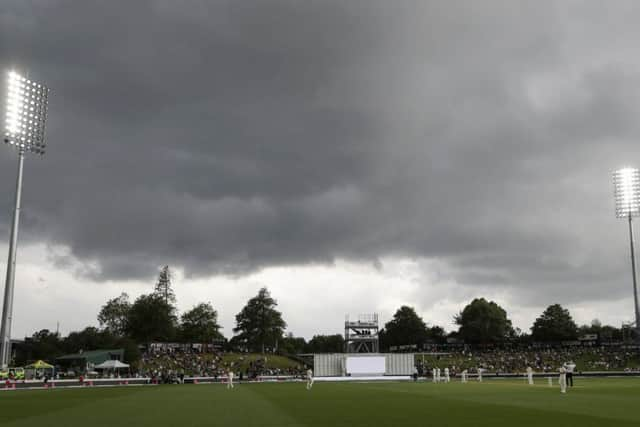England left to spin out of control at whim of the selectors


So said Ken Rutherford, the former New Zealand captain, as he bemoaned his country’s green pitches in the early 1990s.
Things haven’t changed much since in “the land of the long white cloud”, where England took one look at the verdant surface prepared for the second and final Test in Hamilton and said to themselves: “Nah, we’re not playing a leg-spinner on that – or indeed any spinner.”
Advertisement
Hide AdAdvertisement
Hide AdConsequently, there was no place for Matt Parkinson, the 23-year-old Lancashire leg-spinner, who had lived in hope of making his Test debut, especially in light of the team’s abject showing in the first Test in Mount Maunganui and the stated aim to find new ways of taking 20 wickets abroad with the Kookaburra ball.


Nor was there a spot for Jack Leach, the Somerset left-arm spinner who played in the first Test with moderate success.
Instead, England went into the match without a frontline spinner for the first time in Test cricket since the infamous game against South Africa at Headingley in 2012, when Kevin Pietersen became embroiled in what was known as “text-gate” after sending messages to friends in the opposition.
For the record, England’s seam attack on that occasion was James Anderson, Stuart Broad, Steven Finn and Tim Bresnan.
Advertisement
Hide AdAdvertisement
Hide AdIn Hamilton, they went in with five seamers – Broad, Jofra Archer, Chris Woakes, Sam Curran and Ben Stokes. That Stokes pulled up lame with an injury to his already troublesome left knee, after bowling just two overs, perhaps explained the conservative strategy.


Even so, to paraphrase the old maxim that when you win the toss on a bad pitch you think about bowling for a bit but decide to bat anyway, so it is usually advisable, even in conditions where one might be tempted to omit a spinner, to ultimately give one a place in the side.
Only time will tell whether England made the right decision, although their record of success recently in the decision-making department has not, shall we say, been wholly persuasive.
Joe Root has come under heavy pressure, both as captain and batsman, and is sorely in need of a good match here. He started it well enough with three slip catches on a truncated first day in which New Zealand reached 173-3 after Root sent them in, his take to dismiss opposite number Kane Williamson off Woakes, low to his right after the batsman had been squared-up, suggesting clarity of mind for the challenge at hand.
Advertisement
Hide AdAdvertisement
Hide Ad“A captain can do nothing for his side other than win the toss,” said the wonderfully-named Kingsmill Key, a Surrey captain from many moons ago, and although the job might be said to be a little more involved than that, Root clearly did his side a favour by calling correctly at Seddon Park.
Whether he made the right call to bowl, though, will also be borne out by subsequent events; Williamson admitted that he would have bowled, although as Tom Latham proved in scoring a fine, unbeaten 101, even the greenest of pitches do not always equate to seven-down before lunch and a nice three-day win for the side batting second.
As with any day’s play truncated by weather, which closed in after only three balls were possible in the final session, there was a slightly unsatisfactory feel to events.
This was especially true for an England team who dropped Latham on 66 (Stokes the culprit in the slips off Archer), and who thought that they had Ross Taylor lbw to Broad on 25 only for the third umpire to determine that a tremor on Snicko, after the ball had passed the bat, had in fact touched a bat that showed no mark from HotSpot. Taylor went on to 53 before becoming Woakes’s second victim, Broad having to content himself with the wicket of Jeet Raval.
Advertisement
Hide AdAdvertisement
Hide AdEngland’s team had an odd look, with Ollie Pope dropping down to No 7 and taking over as wicketkeeper after Jos Buttler’s pre-match back injury, and with Zak Crawley – normally a top-order player – handed his debut at No 6. Pope has hardly kept wicket in his first-class career, and it highlighted the folly of not having a specialist wicketkeeping replacement on tour.
Another black mark against Ed Smith, the national selector, who, like leg-spinners in New Zealand, should perhaps switch to tennis.